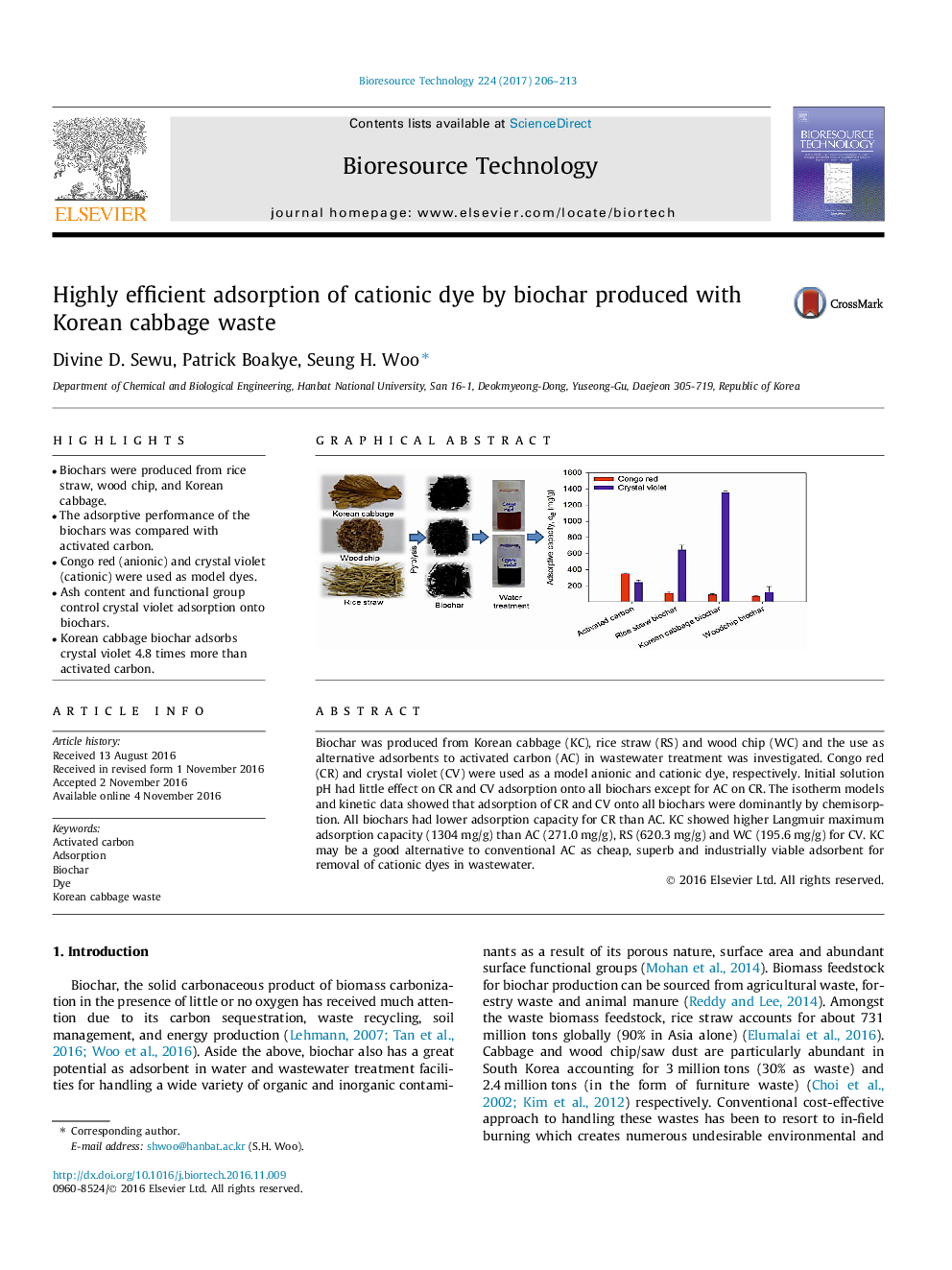| Article ID | Journal | Published Year | Pages | File Type |
|---|---|---|---|---|
| 4997835 | Bioresource Technology | 2017 | 8 Pages |
â¢Biochars were produced from rice straw, wood chip, and Korean cabbage.â¢The adsorptive performance of the biochars was compared with activated carbon.â¢Congo red (anionic) and crystal violet (cationic) were used as model dyes.â¢Ash content and functional group control crystal violet adsorption onto biochars.â¢Korean cabbage biochar adsorbs crystal violet 4.8 times more than activated carbon.
Biochar was produced from Korean cabbage (KC), rice straw (RS) and wood chip (WC) and the use as alternative adsorbents to activated carbon (AC) in wastewater treatment was investigated. Congo red (CR) and crystal violet (CV) were used as a model anionic and cationic dye, respectively. Initial solution pH had little effect on CR and CV adsorption onto all biochars except for AC on CR. The isotherm models and kinetic data showed that adsorption of CR and CV onto all biochars were dominantly by chemisorption. All biochars had lower adsorption capacity for CR than AC. KC showed higher Langmuir maximum adsorption capacity (1304Â mg/g) than AC (271.0Â mg/g), RS (620.3Â mg/g) and WC (195.6Â mg/g) for CV. KC may be a good alternative to conventional AC as cheap, superb and industrially viable adsorbent for removal of cationic dyes in wastewater.
Graphical abstractDownload high-res image (92KB)Download full-size image
